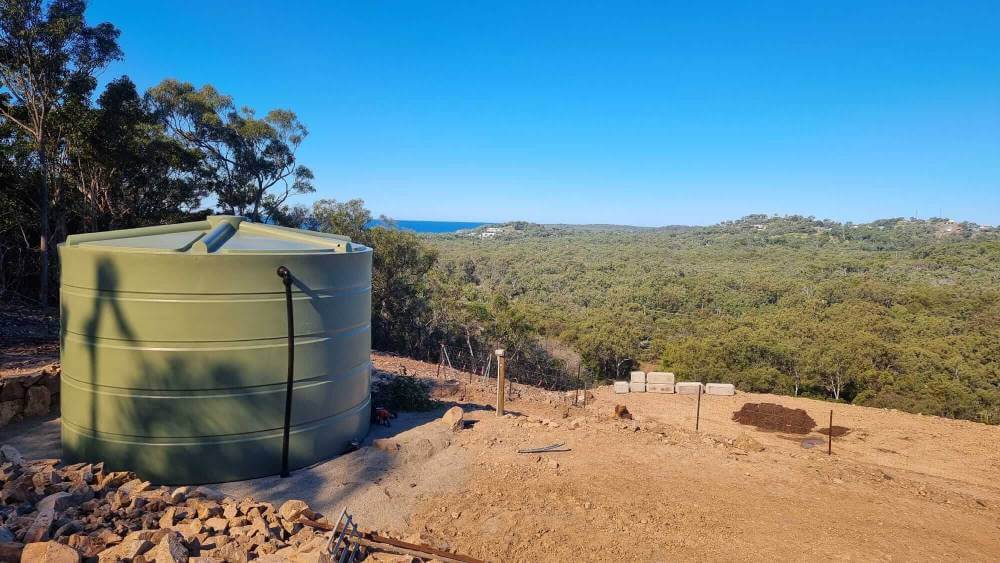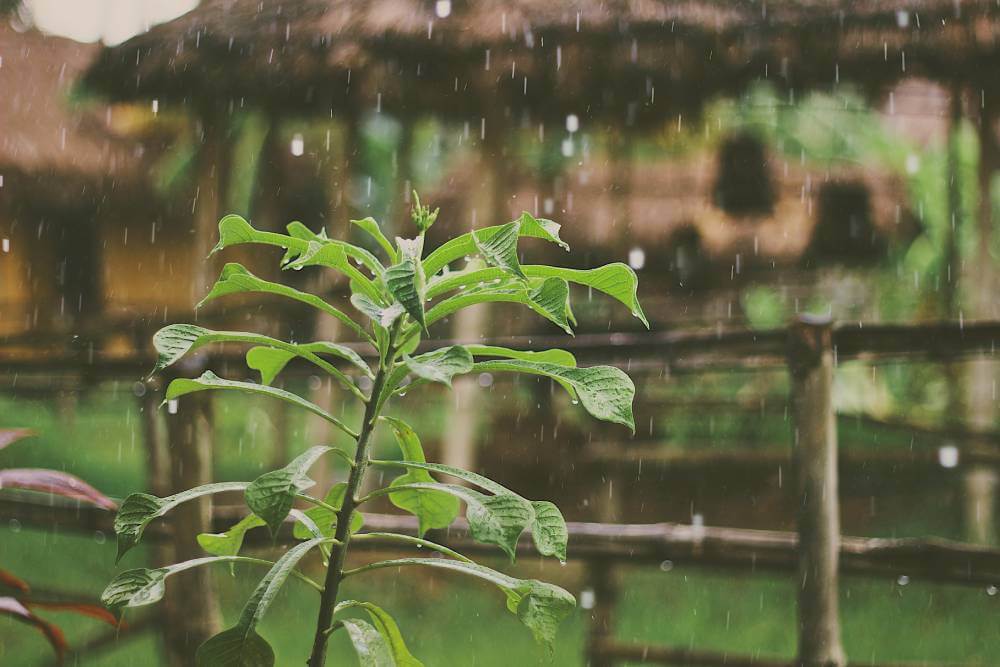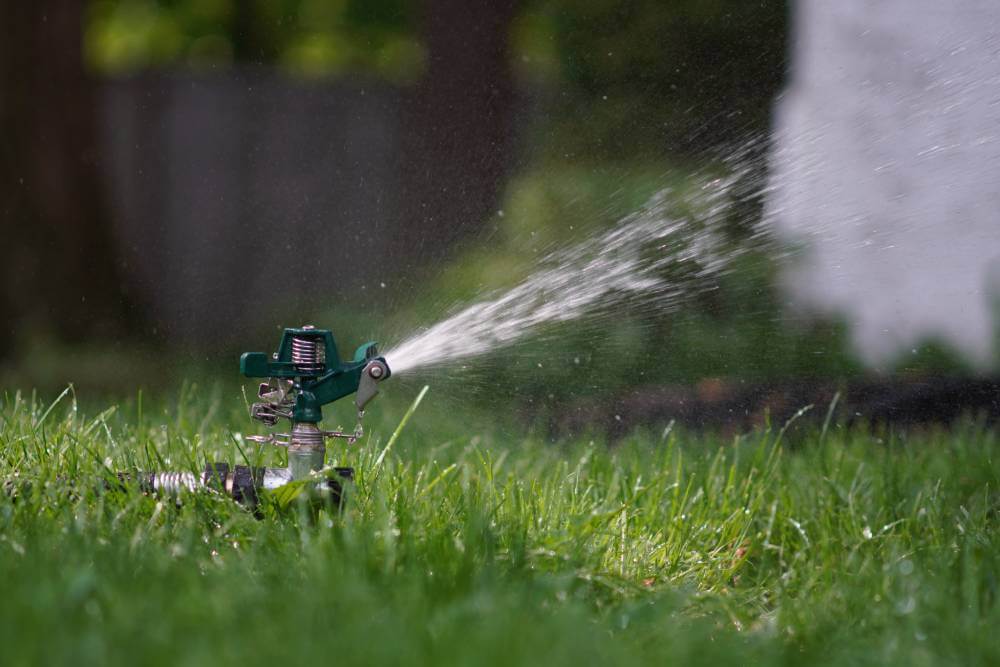Australia is the driest inhabited continent in the world and among the world’s highest consumers of water. Australia’s supply of freshwater is increasingly vulnerable due to droughts therefore emphasising the need for water conservation. Since settlement in Australia rainwater has been a valuable natural resource that has been collected by households for domestic use. YourHome.gov.au tells us Australia uses more water per person than most other countries in the world.
Why should I purchase a rainwater tank?
Various regions in Australia have imposed restrictions on the use of water to preserve what we have. As water is an increasingly vulnerable commodity many places in Australia have trouble obtaining enough. While most people in city areas have access to urban water resources, some places in rural regions in Australia find it best to store their own water. While much is being done in terms of water conservation policies at a national and state level, there is much that can be done to improve water security at a household level. The key strategy to ensure household water security is the installation of a rainwater harvesting system to help relieve water storages and provide water security for household and domestic uses.
The collection of rainwater is often done in a couple of different ways transporting water to the storage tank, collection water info your storage tank from your roof via downpipes, or in rural areas or off-grid rural households people have to pump from rivers, bores, or dams. The most preferred method to source water for household supply being catching rainwater.
What can I use rainwater for?
Rainwater can be used for a wide variety of general purposes. In some places rainfall that is collected from roofs is classified as non-potable before it is treated. However, there are plenty of uses for untreated rainwater.
- Indoor non-potable fixtures (toilets, washing machines, etc.)
- Refilling ponds and fountains
- Drinking water for livestock
- Washing windows, vehicles, pets, outdoor areas
- Watering your garden
- Showering, baths
- Refilling your pool
The options are endless Key Life Homes has many further ideas on what you can use rainwater for.
What benefit would a rainwater tank be for me?
You will also find with the assistance of your own rainwater harvesting system will reduce costs you usually spend on your water bill. The general household appliances such as washing machine or dishwashers, or toilets will be much more environmentally friendly. You can also use your rainwater for washing your car, bathing your pets, watering your garden, or filling your swimming pool. Its also a proven fact that rainwater is better for cleaning your windows, leaving no streaky marks.
What type of connection is needed from the gutter to the tank?
There are two options – a ‘wet pipe’ system and a ‘dry pipe’ system.
In a ‘wet pipe’ system, the pipes from the gutters go vertically down the wall and are buried underground and then emerge near the water tank as a riser and connect to the tank inlet. The name ‘wet pipe’ is because when the rains stops falling the water is trapped underground and will stop flowing through the piping system. The main benefit of wet systems is the pipework is hidden underground and out of sight. Wet systems also allow you to place your tanks further away from your home, which may be a better choice from a practical or aesthetic point of view. The disadvantage is as the water is trapped this system is particularly vulnerable to mosquito infestations and anerobic fermentation, however if the system is drained after rainfall these issues can be prevented. To find out more about wet systems click here.
In a ‘dry pipe’ situation water flows downhill from the gutter into the water tank. Piping connects the gutter to the water tank inlet and with no residual water left in the pipe, the system is dry. Dry pipe systems are typically quick and cheap to install and require little maintenance, unlike wet systems, with no stagnant water. Typically, dry pipe systems apply in situations where the water tank is close to the home, and you are happy for the pipework to be viable. To find out more about dry systems click here.
Where should I install a water tank?
There are many factors that might influence the best place to locate your water tank. These factors will in turn will depend on the preferred size, shape, installation method and colour of your tank. Here at Enmach we have you covered in terms of options available in a wide range of shapes, sizes and colours.
How should I prepare for a rainwater tank?
To prepare for a rainwater tank please check out or blog; How to prepare for a Rainwater Tank.
How much Rainwater should I expect to harvest?
Rainwater harvesting has a number of contributing factors that will determine how much you can harvest. The amount of water depends on of course the amount of rainfall and the roof area supplying your tank. Also remember that only the catchment and gutters that are connected to your water tank will feed your tank. A plumber will tell you how to maximise your rainwater collection by connecting different catchment areas on your roof.
As a rule of thumb 1mm of rain on a square meter of roof will deliver 1 litre of water to your tank. On an average 230 square meter house 25mm of rain falling on the roof will produce almost 5,800 litres of water. For a more detailed assessment we recommending using Tankulator – an online rain harvesting calculator that uses average rainfall in your postcode, your water usage (from your local council water notice_ and the size of your roof area to help you plan for a new rainwater tank.
I hope you are now able to make a more informative decision on purchasing your rainwater tank. It is a great idea to have your very own water tank because at the end of the day you will save in some way, shape or form. Water is a scarce commodity in Australia. Enmach tanks come in sizes from 1000L right up to 30,000L. They are quality made Australian rainwater tanks that are UV stabilised polyethylene provides sun protection for tanks that can last 30 years or more.
Check our range Please be in touch with our friendly team today 1800 502 267.



